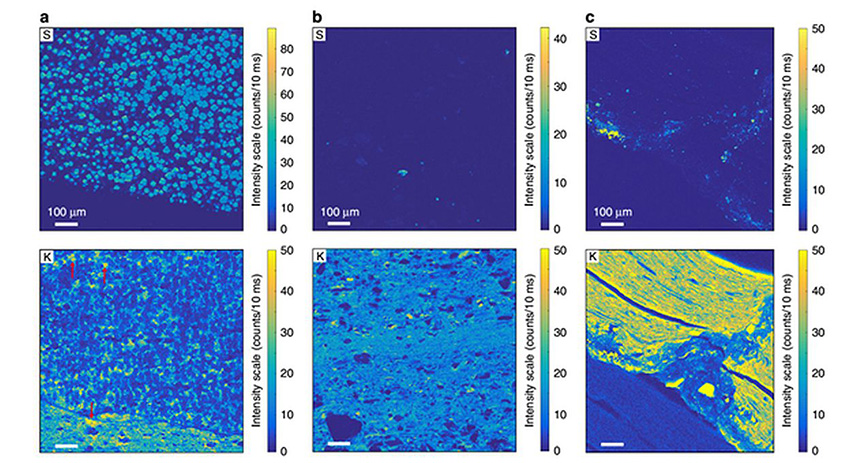Researchers from the University of Poitiers-CNRS, in collaboration with the Nanoscopium beamline and an international and multidisciplinary team, are developing a new scientific approach that may reveal the evidence of long-disappeared biological activity in ancient rocks. This study could also help in the identification of faint evidence of life on Mars.
The Nanoscopium beamline contributed to this interdisciplinary and multimodal research through the use of multi-lengthscale scanning X-ray fluorescence imaging.
The results obtained were published in Nature Communications.
The study of the first trace of life on Earth provides an understanding of the evolutionary path of life. Since a couple of decades, intensive research is carried out to look for traces of life dating back to the early Earth as well as for evidence of life on Mars . However, the rocks present on primitive Earth (> 2 billion years) and those described on Mars are unlikely to have retained any remnants of life (organic matter). How then can we demonstrate the presence of trace of life within this type of rock when there is no longer any evidence of organic matter, or when it has been transformed?
Recent research suggests that this ancestral life could consist of organo-sedimentary rocks uniting bacterial mats and mineral particles, which developed at least 3.5 billion years ago. Bacterial mats are a very common life form on Earth. The bacteria that form these mats secrete substances mainly composed of complex sugars, proteins, lipids and DNA. Their metabolism also permits to sequester elements such as potassium (K) present in seawater. Over geological time, the trapped potassium was released into the environment. It will then play a major role in the mineral reactions leading to the formation of clay particles with a high potassium content.
The study published in Nature Communications demonstrates that there is a high K content in clay particles called illites, both abundant and well crystallised in bacterial mats, but not in the surrounding sediments (sandstone and clays). This observation suggests that bacterial mats trapped the K of seawater and released it into interstitial waters during the degradation of organic matter, resulting in a reaction formation of the K-rich clay minerals known as illites. The development of these specific clays exclusively in fossilized bacterial mats could provide useful information for the detection of biosignatures preserved in sediments from rocks depleted in K-feldspar (potassium-rich feldspar), which were abundant components of the upper continental crust of early Earth and also of Mars.
The researchers also claim that the bacterially induced formation of K-rich clays has also had significant consequences on the Paleoproterozoic climate and ocean chemistry. 2.1 billion years ago, the sun was around 20% less intense than it is today. However, the Paleoproterozoic era is known as a hot climate period. This is probably due to the impact of the neo-formation of clays. While the continental alteration processes globally produce dissolved silica and lead to CO2 consumption, the neo-formation of clays has the reverse effect, namely CO2 production, causing the notorious "greenhouse effect" which will increase the atmospheric temperature. This CO2 production also modifies the ocean chemistry as it is a source of acidity.

Figure 1: Sulfur (S) and Potassium (K) distribution maps obtained by scanning X-ray fluorescence imaging: pyritized bacterial mats (a), "black shale" host sediment (b), and non-pyritized bacterial mats (c). The distribution of K shows that its concentration is higher in bacterial mats (a, c) than in the host sediment (b). For easier comparison, a common intensity scale was chosen for the K distribution maps.
As a result, the transformation of smectites into illites, induced by the presence of bacterial colonies, indicates previously unknown interactions between cellular metabolism, atmospheric CO2 emissions and ocean chemistry.
This study suggests K accumulation in specific illites as a biosignature preserved in sediments derived from K-feldspar depleted rocks, such as early Earth’s sediments, where stable isotope evidence is controversial.
Consequently, research into evidence of life, whether in a context of primitive Earth or on the planet Mars, could take into account clay reactions induced by biological activity, and this may not even include any remnants of living organisms.
